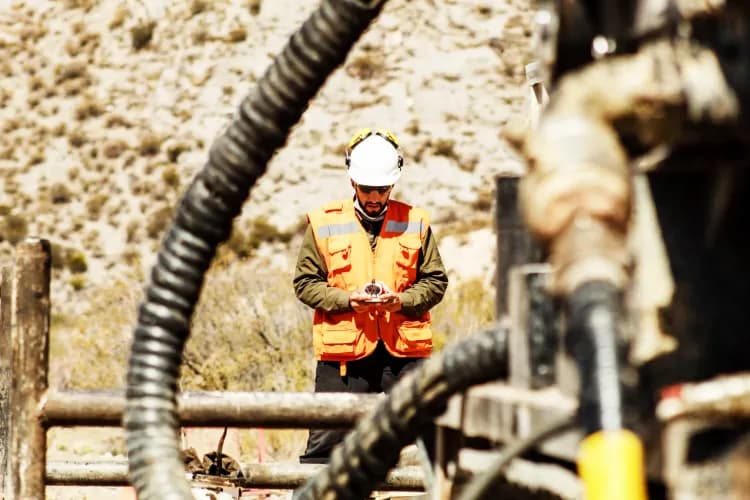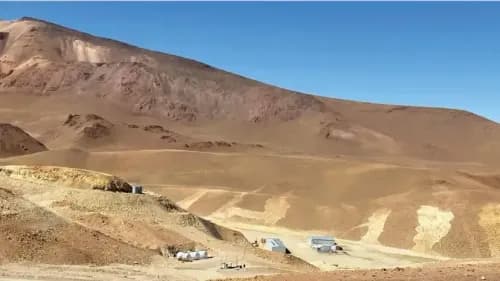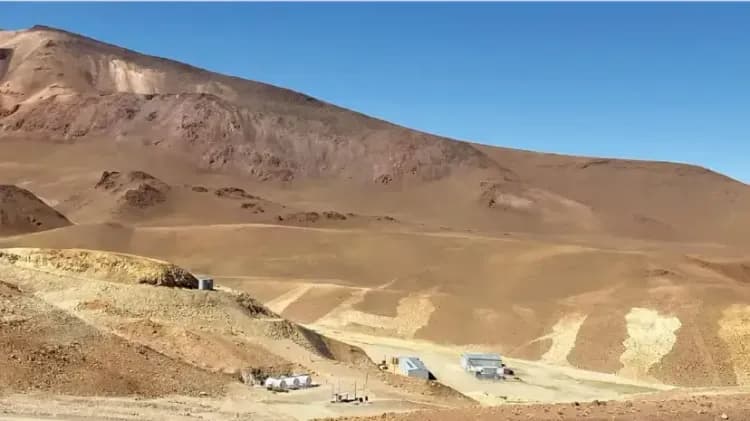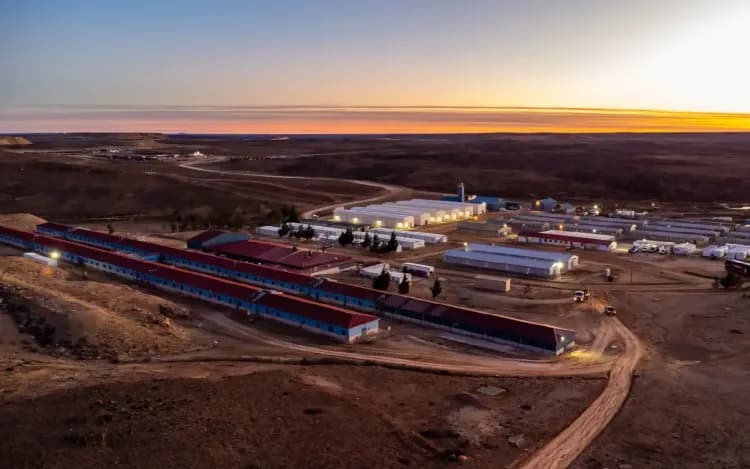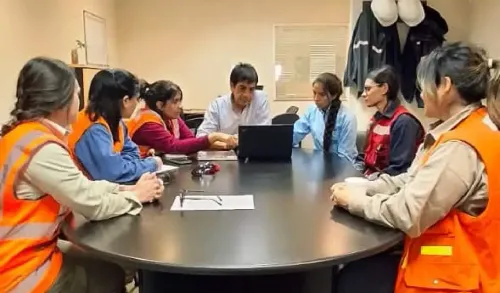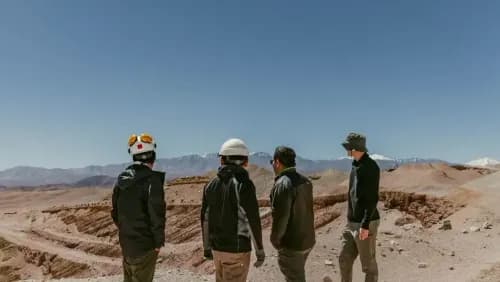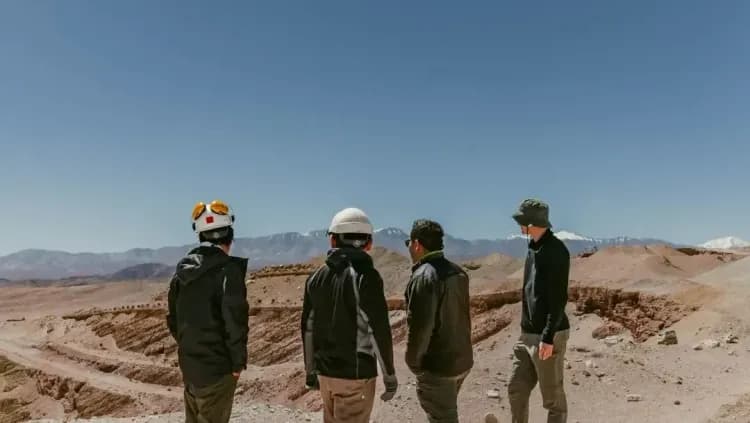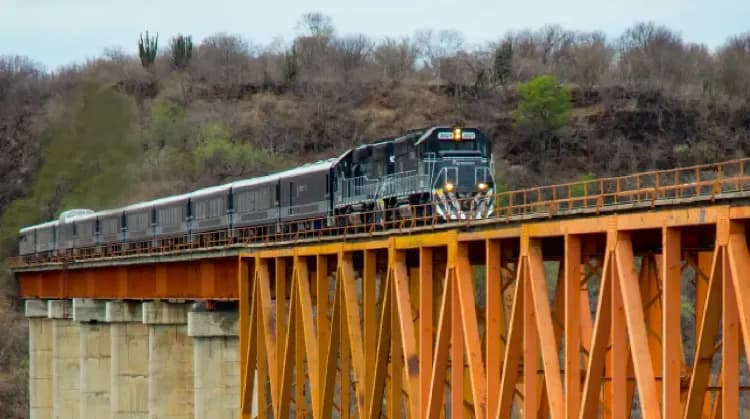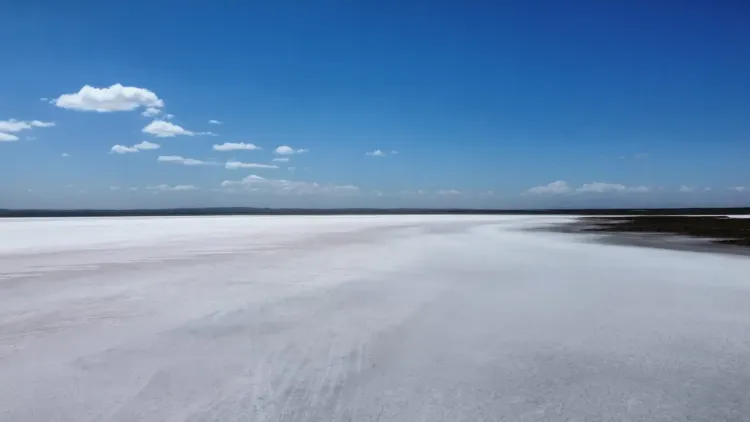With results revealing four mineralization horizons and a low-impact extraction model, Mendoza is analyzing what could be the future of uranium mining in the country.
By Panorama Minero
The Province of Mendoza, historically recognized as a pioneer in uranium production in Argentina, now stands on the threshold of a significant resurgence. This is not merely a hopeful prospect, but a developing reality driven by the promising and compelling exploration results from Blue Sky Uranium. These findings not only reaffirm the region’s vast geological potential, but also position Mendoza to reclaim its leading role in supplying this strategic mineral—this time through innovative and low-impact technologies.
Blue Sky is operating on the Mendoza side of the Neuquén Basin, focusing on former oil wells. An initial review of exploration data from 89 historic oil and gas wells has already yielded outstanding results, identifying radiometric anomalies in thirty of them. Crucially, the company has detected four distinct stacked horizons with uranium mineralization. This level of technical detail—including depths, thicknesses, and uranium equivalent (Ueq) values of up to 261 ppm—provides a solid foundation for the development of In Situ Recovery (ISR) projects, the technology that is revolutionizing uranium mining worldwide.
A Historical Legacy
Mendoza played a key role in the development of Argentina’s nuclear program. From the first discoveries in the 1940s and the launch of the Huemul Mine in Malargüe—the country’s first uranium-producing site—to the operation of the San Rafael Mining and Industrial Complex (CMFSR), also known as Sierra Pintada. The latter supplied nuclear power plants such as Atucha I and Embalse for over two decades (1975–1997).
However, the closure of Sierra Pintada, the need for an environmental remediation process, and the enactment of Provincial Law 7722 in 2007—which prohibits the use of substances like sulfuric acid in metal mining—halted much of the development. Yet interest in uranium mining never truly vanished. Blue Sky’s current exploration phase aims precisely to identify and reassess the remaining geological potential of viable deposits.
The Neuquén Basin
Blue Sky’s focus is centered on the Corcovo Project, located in former oil wells within the Neuquén Basin in Mendoza—the same geological formation that hosts the Vaca Muerta shale deposit.

Corcovo consists of two adjacent exploration properties totaling approximately 20,000 hectares along the northeastern edge of the Neuquén Basin. The company conducted a comprehensive initial review, analyzing prospecting data from 89 historic oil and gas wells. This technical review proved highly revealing: radiometric anomalies ("Ueq") were identified in thirty wells, confirming the presence of mineralization.
Most notably, four distinct stacked horizons with uranium mineralization were detected, indicating a stratigraphy rich in the mineral:
-
The Core of the Centenario Formation, the primary and most continuous target, lies at depths of 500–600 meters. It shows prospective radiometric anomalies ranging from 1 to 10 meters in thickness, with uranium equivalent (Ueq) values up to 261 ppm (equivalent to 0.03% U₃O₈eq) in borehole JCP-100. Estimated porosity between 22% and 30% indicates excellent conditions for In Situ Recovery (ISR). Additionally, possible roll-front morphology has been described over approximately 7 kilometers, suggesting significant deposit continuity
-
The Margin of the Centenario Formation (500–550 meters) showed isolated intersections of up to 60 ppm Ueq
-
The Neuquén Horizon (300–400 meters) recorded Ueq values ranging from 25 to 65 ppm
-
The Rayoso Channel (450–500 meters) showed values between 30 and 80 ppm Ueq
These uranium equivalent values (Ueq) were obtained directly from calibrated spectral gamma-ray logs, with measurements taken at intervals of approximately 0.15 to 0.25 meters. Porosity was accurately estimated using averaged data derived from geophysical logs (neutron, compressional sonic, and bulk density RHOB), reinforcing confidence in the technical feasibility of ISR.

In Situ Recovery: The Key to a Sustainable Future
Mendoza’s potential aligns with a global trend: In Situ Recovery (ISR). As uranium exploration geologist and President of the Mendoza Chamber of Mining Entrepreneurs, Guillermo Pensado explained to PANORAMA MINERO this method already accounts for between 50% and 60% of global uranium production—and for good reason. ISR allows uranium to be extracted in solution, eliminating the need for traditional open-pit or underground mining.
The expert emphasized that, visually, the process is very low-impact. It works through the controlled injection and extraction of solutions that dissolve the uranium from the rock, placing it in a closed-loop system. The industry has moved toward ISR over the past two to three decades due to its very low production costs and minimal environmental footprint. For ISR to be viable, specific geological conditions are required—such as a well-sealed and confined aquifer with no alternative water use.
According to Pensado, ISR in such contexts is not only efficient but also aligns with current environmental demands, making it possible to operate even near populated areas without creating risk. The Corcovo Project has been validated for uranium development using ISR, as confirmed by the technical data.
However, he noted that these are exploration processes that take time and follow the long timelines typical of the mining industry. Many steps are still required before ISR uranium production in Mendoza can become a reality.
A Proven Model: Lessons from Inkai in Kazakhstan
Blue Sky has adopted the Inkai deposit in Kazakhstan as a model for Corcovo—a global benchmark in ISR uranium mining. Inkai is also a roll-front deposit hosted in permeable fluvial sandstones, with mineralization at depths ranging from 350 to 530 meters. Its ore bodies vary in thickness from 2 to 10 meters, with localized zones up to 15 meters, and extensive lateral continuity—traceable over 25 kilometers and several hundred meters in width.
The average uranium content at Inkai is approximately 0.03% U₃O₈, with reserves totaling 368 million tonnes and 251 million pounds of U₃O₈. The geological and operational similarities with Inkai underscore the vast potential that Blue Sky sees in Mendoza.
Next Steps
While ISR remains the flagship technology, the choice of mining method will ultimately depend on the economic viability and deposit characteristics of each project. Blue Sky is already advancing projects with different approaches: At the Ivana deposit in Río Negro—also located at the southern end of the Neuquén Basin—open-pit mining is feasible due to shallow, unconsolidated sandy mineralization. At Cerro Solo in Chubut, significantly higher uranium grades could justify the economics of underground mining.
In Mendoza, Provincial Law 7722 prohibits acid leaching using sulfuric acid. However, this does not restrict ISR, as alternative lixiviants can be used. For instance, at Ivana, alkaline leaching with sodium carbonate and bicarbonate is being considered—a method that complies with local regulations.
Historical experience also provides valuable insights. Argentina’s first uranium mine, Huemul, used flotation, a method that remains a viable alternative. Innovation and regulatory adaptation will be key, especially since many of these deposits—like Huemul itself—are polymetallic, containing copper, uranium, and vanadium.


